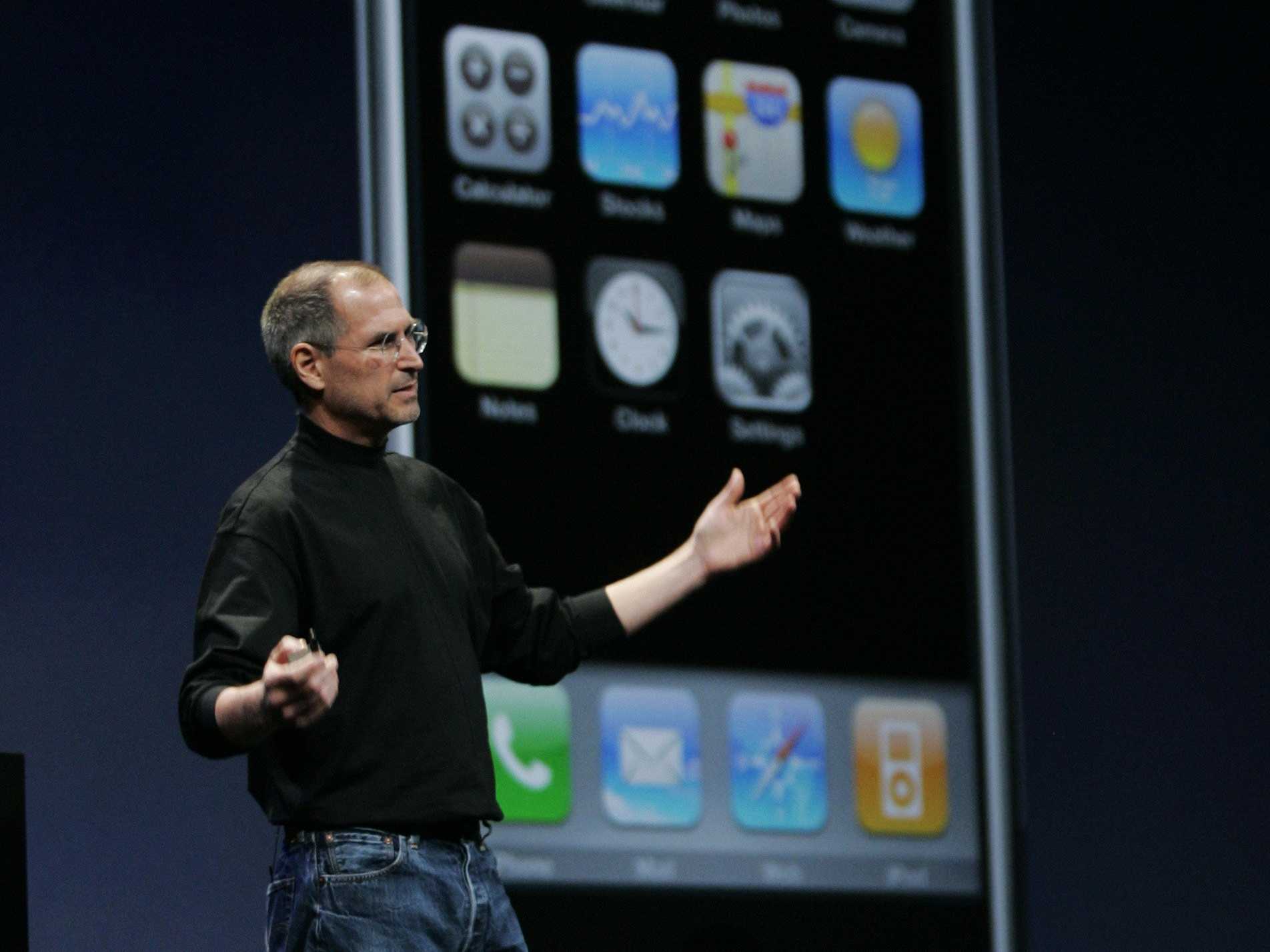10 years ago, Steve Jobs revealed the first iPhone to the world.
It was a revelation.
Before the iPhone came out, smartphones were clunky devices, half keyboard and half screen.
Full websites didn’t run on mobile phones, so companies were forced to build weak, mobile versions of their sites.
The iPhone changed all that.
And yet, the typical smartphone experiences we all enjoy today didn't happen overnight. It took years of Apple adding feature upon feature. By today's standards, the original iPhone was a primitive brick.
As a reminder of how far the iPhone has come, we've put together this slideshow.
Jay Yarow contributed to an earlier version of this story.
Yes, the original iPhone was a revelation. Here's what the competition looked like at the time:

That said, it's fun to look back and see how many now-common features were missing from the original iPhone.

It ran on "EDGE," or 2G wireless, which is painfully slow. It's basically as slow as home internet was before high-speed broadband.

That 2G connection was extra painful because AT&T was the only carrier option available. And AT&T had its problems (like dropped calls).

There was no App Store when the iPhone launched. That means no "Angry Birds," no Instagram, no "Pokémon GO" — that's all the best stuff!

Beyond the touchscreen and sleek design, the defining concept of modern smartphones is apps. Unbelievably, when Apple first launched the iPhone it had no App Store.
Steve Jobs wasn't sure if he wanted to have one because of his desire to totally control the experience. Eventually, he relented. And it's a good thing he did, because Apple's App Store set the standard for how to extend smartphone functionality.
Hopefully you liked a black background, because that was the only choice! That's right: You couldn't change the wallpaper on the first iPhone.

It took three years for Apple to add cut/copy and paste.

The first iPhone required a computer to set it up. It was another five years before Apple cut the cord.

Wanna text message in landscape mode? The first iPhone couldn't.

Wanna send a picture? The first iPhone also couldn't do that over text message. We've come a long way from basic text messages to the bizarre disco that is modern iMessage.

There were no turn-by-turn directions apps — no Google Maps! It's not just that Apple didn't have turn-by-turn — it didn't let other app developers do it for years, either.

The camera was ... very weak, and not capable of taking the kind of gorgeous photos you expect out of modern iPhones.

The camera also couldn't do video, which means it couldn't do adorable Vines like this:

There was no notification center, no Siri, and no control center. These are all complex, nuanced features that are relatively recent additions to the iPhone — but it's still a reminder of how many huge features Apple has added since 2007.

And it cost $499 for a 4 GB model! There was no $200 or $0 subsidized option.

So what?

The point here is that technology takes time to mature. While the iPhone was a revelation when it was released, it still had a long way to go. The next time your favorite tech company releases a new product - especially if that new product is in a new category the way, say, smartphones were in 2007 - cut them some slack. Assuming the fundamental product vision is sound, the first version is just that: a starting point.

